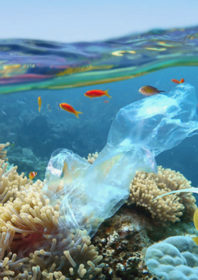Circular Economy explainer
06 May 2020 publication
In an increasingly expanding global economy, within a resource-constrained environment; concerns over the exploitation and possible future scarcity of natural resources are rapidly rising. In recent years, interest in a circular model that looks beyond the current linear ‘takemake-waste’ industrial model, has surged among scientists, policy makers and business actors. The circular economy is based on the principles of designing out waste and pollution, keeping products and materials in use, and regenerating natural systems.
Micro-organisms are crucial in creating a circular production cycle for plastics,where these can be re-used, recycled and upcycled through their conversion into biodegradable polymers. Microbial components also affect anaerobic digestion – the process by which organic matter such as animal or food waste is broken down to produce biogas and biofertiliser. Finally, the nutritional versatility of micro-organisms can be exploited for biodegradation of pollutants, a process termed as bioremediation.
Image credit: iStock/Tunatura

